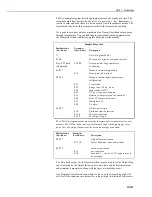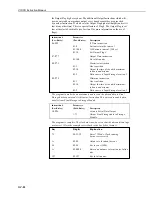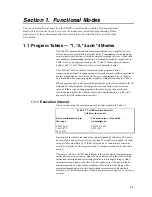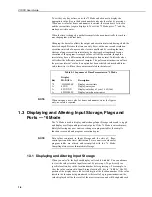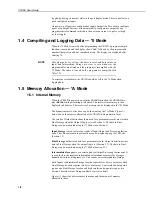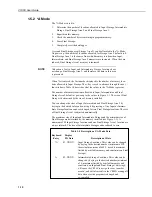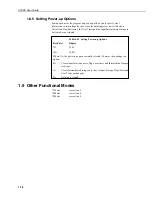
Section 1. Functional Modes
1-5
To enter a value in a
∗
4 location, advance to the desired location, key in the
number and enter it by pressing the
A
key. The value is not entered if the
A
key is
not pressed.
Entering a new value causes the datalogger to stop logging.
Logging resumes when the program is compiled. Upon compiling,
all current
∗
4 values are incorporated into the program. For this
reason, whenever changes are made in the
∗
4 Mode, make sure that
all
∗
4 values are correct before exiting the
∗
4 Mode.
Modifying the datalogger program by removing or adding an
instruction to a program disables the
∗
4 Mode. (Instruction
parameters may be edited without affecting the *4 Mode.) If
the
∗
4 Mode is disabled, it may be reactivated by downloading
the program to the datalogger or, if the program was saved to
Flash storage, retrieving the program from the stored program
area.
The CR10X will not respond to the
∗
4 command if any of the following
conditions exist:
−
the program that was downloaded does not contain any
∗
4 assignments.
−
the program that was downloaded has since been manually edited.
−
Security is blocking access to
∗
4.
1.1.5 Compiling a Program
When a program is first loaded into the CR10X, or if any changes are made in the
*1, *2, *3, *4, *A or *C Modes, the program must be compiled before it will run.
The compile function checks for programming errors and optimises program
information for use during program execution. If errors are detected, the appro-
priate error codes are indicated on the display (see Section 3 for a description of
the error codes). The compile function is executed when the *0 , *6 or *B Modes
are entered and before saving a program listing in the *D Mode. The compile
function is only executed after a program change has been made, so that subse-
quent use of any of these Modes simply returns to the Mode without recompiling.
When the *0, *B or *D Mode is used to compile, all output ports
and flags are set low, the timer is reset, and data values contained in
Input and Intermediate Storage are reset to zero. When the *6 Mode
is used to compile, data values contained in Input Storage are
unaltered, as are the states of flags, control ports and the timer
(Instruction 26). Compiling always zeros Intermediate Storage.
1.2 Setting and Displaying the Clock — *5 Mode
The *5 Mode is used to display the time or change the year, day or time. When
*5
is entered, the time is displayed and updated approximately once a second or
longer depending on the rate and degree of data collection and processing taking
place. The sequence of time parameters displayed in the *5 Mode is given in
Table 1-2.
NOTE
CAUTION
NOTE



